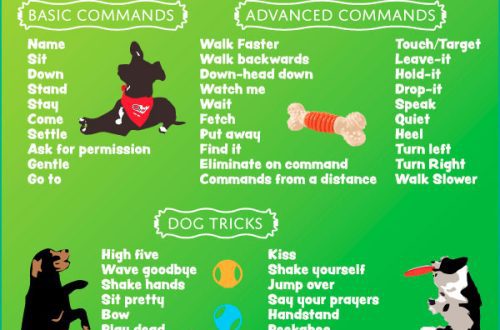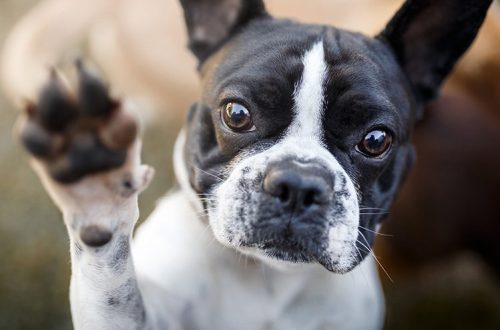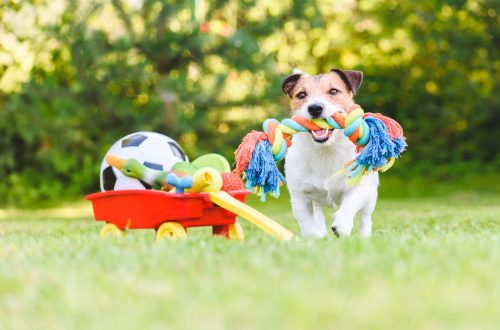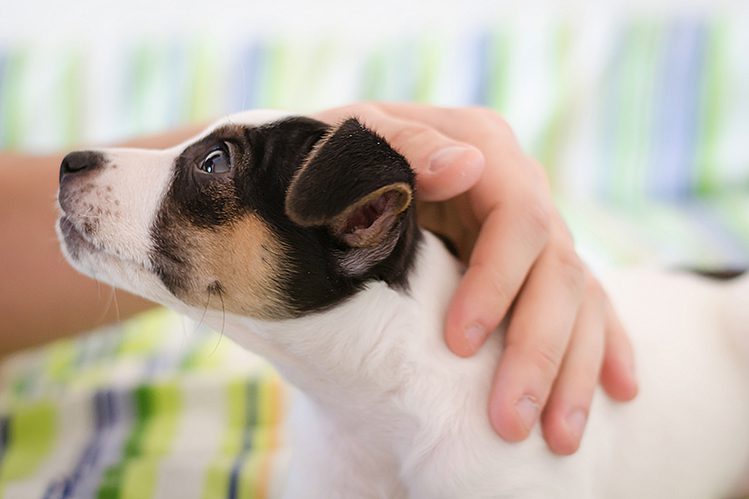
What should a puppy be able to do by 3 months?
Surprisingly, you can teach your puppy the first commands immediately after moving to a new home. That is, in just 2-3 months: more about this in the article ““. A baby learns a lot from his mother even before meeting his new permanent parent. He instinctively copies her behavior and masters the basics of communication with relatives and humans. But the most interesting begins from the moment the puppy moves to a new home. He will have to become part of a new family, learn his nickname, his place, his bowls, adapt to the new daily routine and master the first commands. We will talk about what it is useful for a baby to know and be able to by 3 months in our article.
Contents
What should a puppy be able to do by 3 months?
If you purchased a puppy from a breeder and everything went according to plan, then by 3 months the puppy is already more or less accustomed to the owner and family members. He knows his nickname, his place, gets used to the feeding regime, masters the leash or harness, learns to adequately respond to external stimuli (for example, to the signals of cars on the street) and calmly endure care procedures. And also maintain order in the house: go to the toilet for diapers or go outside (after vaccination and quarantine), do not perform actions prohibited by the owner, do not ignore commands. Of course, you also have a lot to learn. For example, to be consistent in upbringing and training, to understand the capabilities of the pet and not to demand from him beyond measure, to give commands clearly and in the right situation. Establish work in your newfound team – and everything will work out!
Top 5 first teams in a puppy’s life
You can teach these commands to your baby from the first days in a new home. You should not expect that he will immediately understand and learn everything. But gradually, through trial, error and repetition, the baby will learn everything.
— Place
– It is forbidden
– Phew
– To me
– Play.
In the period from 3 to 6 months, this list will double in size. And how many commands the dog will know by the year!

How to teach a puppy the first commands?
- How to teach a puppy the “Place” command?
Teaching a puppy this command is usually very simple. You can start it from the first days of the appearance of the puppy in the new home, as soon as he adapts a little.
Choose a comfortable bed for your puppy and place it in a quiet, draft-free place. Place your puppy’s favorite toys and treats on the bed. As soon as you see that the baby is tired and is about to rest, take him to the couch and let him eat a treat. At the same time, gently repeat the “Place” command.
If the puppy tries to run away after you put him on the bed, hold him and repeat the command. Pet the baby, wait until he calms down, give a treat, say “okay” and move away. The puppy can get up again and run away. In that case, watch him. When the puppy wants to lie down, take him back to the bed and repeat all the steps. At first, the exercise should be repeated 3-4 times a day.
- How to teach a puppy the command “Fu”?
“Fu” is the most important command in a dog’s life. It means a categorical ban and is used in serious and dangerous cases: when a pet picks up food on the street, expresses aggression, howls, jumps on people, etc.
For the puppy to learn it, you need to repeat the command “fu” every time he performs an unwanted action. The command must be pronounced clearly and strictly. At first, it must be accompanied by a jerk of the leash, so that the puppy understands what is required of him.
“Fu” is a serious team. Use it only on business, and not at any convenient occasion for safety net. Otherwise, the dog will stop responding to it, and this can lead to sad consequences.
- How to teach a puppy the “No” command?
The “No” command, at first glance, is very similar to the “Fu” command. But they have different purposes. If “Fu” is a categorical prohibition that must always be respected, then the “no” command is a temporary prohibition.
When teaching this command to the puppy, it is important to distract from the currently undesirable action, i.e. divert his attention to something else. For example, you decide to sit in your favorite chair, and the puppy jumped on it in front of you. You need to quickly switch his attention, for example, throw a toy on the floor. As soon as the puppy jumps off the chair (that is, stops the unwanted action), command “No” in a calm tone.
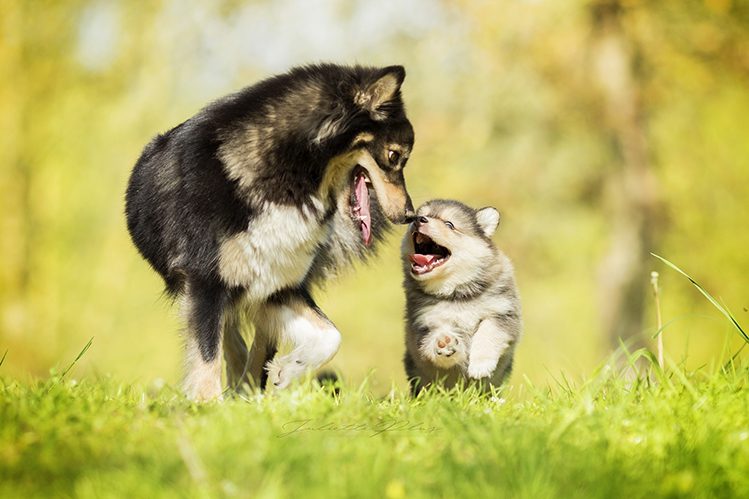
- How to teach a puppy the command “Come to me?”
You can proceed to this command when trust has already been established between you and the puppy and when the puppy already knows his nickname. To practice the command, you need a treat. When the puppy sees the treat in your hand, he will run towards you. At this moment, command “Come to me”, and as soon as the puppy runs up, treat him with a treat and praise. According to the same scheme, you can work out a team with feedings.
First, do the exercises within the room, while the puppy is not doing anything. In the future, call him from the next room when he is passionate about something else, etc. Smoothly move to working out the team on the street. Repeat the exercise 3-5 times a day.
- How to teach a puppy the command “Walk”?
When the puppy has learned the command “Come to me”, you can learn a new one – “Walk”.
To do this, unfasten the leash. Give the command “Walk” and run a little forward, dragging the dog along with you: you can slightly pull on the collar. Let the puppy walk, then praise him and reward him with a treat. Over time, shorten your run and learn to send the puppy forward with one hand movement. Then – just a voice command. Repeat the exercise 3-5 times a day.
During the walk, unfasten the leash, give the command “Walk” and take the puppy along with you for a short run so that it runs forward. After the puppy walks for a while, reward with petting and treats.
In the future, having given the command “Walk”, shorten the run, and subsequently just send it forward. During the day, repeat the exercise 4-5 times.
Raising and training a dog is a complex and responsible process. In the absence of experience, it is advisable to seek support from a specialist. He will teach the basics and help correct the shortcomings.
All dogs are different. Each pet grows at its own pace and learns information differently. Some demonstrate the wonders of training as early as three months, while others are too worried about changing teeth or adapting to a new place and while they are “hacking” with the teams.
Finding an approach to a pet can be difficult. Especially if the breed you have chosen is famous for its stubbornness and independence. But you can’t let everything go by itself. The older the pet becomes, the more firmly the patterns of behavior take root in it. It will be much more difficult to re-educate a teenager or an adult dog. So continue to build a bond with your pet and make friends with a professional dog handler or animal psychologist: they will help a lot!
In our next article, we will cover . Take note of them so you don’t accidentally repeat them.



